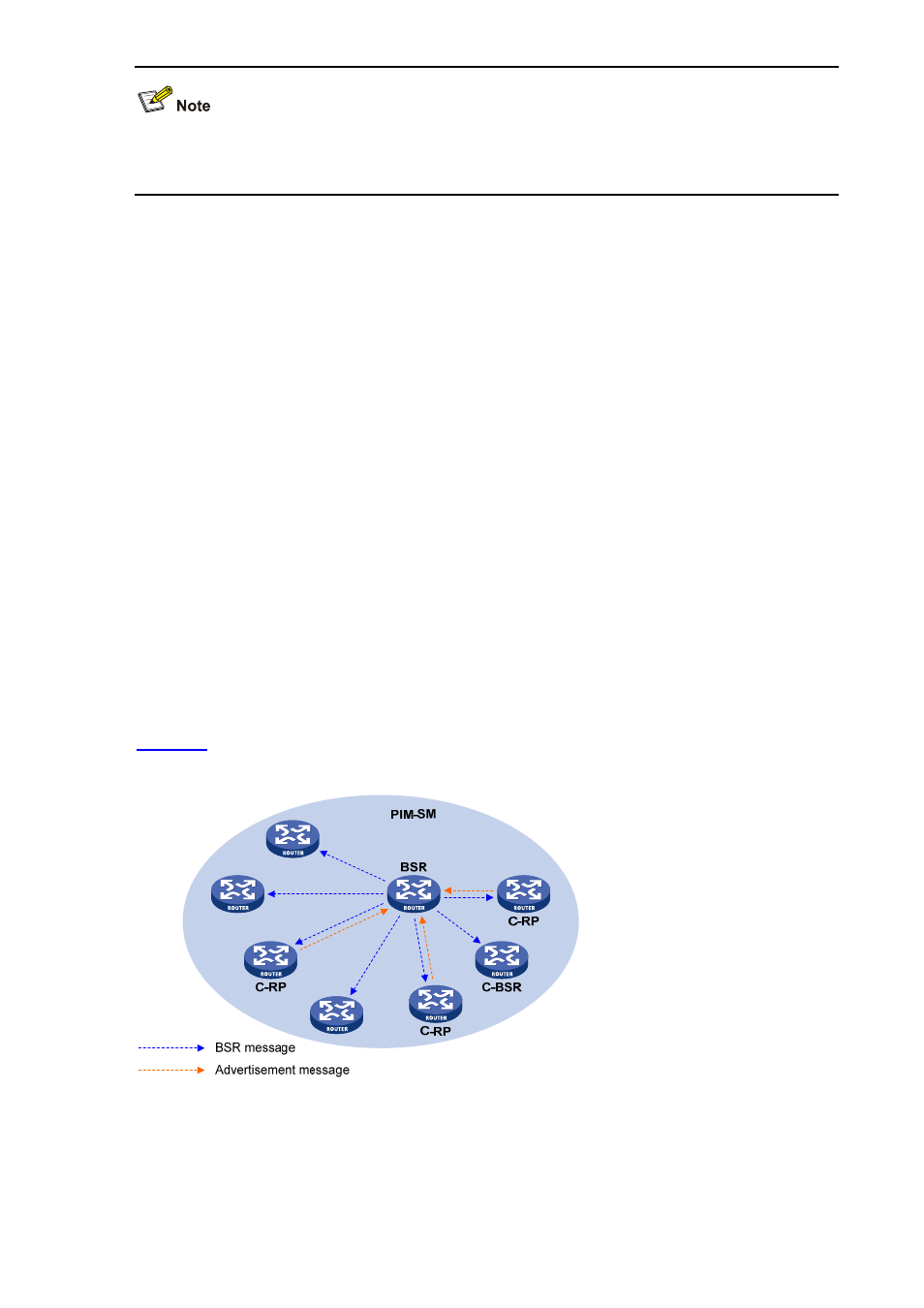Rp discovery – H3C Technologies H3C S3600 Series Switches User Manual
Page 412

4-7
z
S3600 series Ethernet switches do not support DR priority. DR election is based on IP addresses.
z
In a PIM-DM domain, a DR serves as an IGMPv1 querier.
RP discovery
The RP is the core of a PIM-SM domain. For a small-sized, simple network, one RP is enough for
forwarding information throughout the network, and the position of the RP can be statically specified on
each router in the PIM-SM domain. In most cases, however, a PIM-SM network covers a wide area and
a huge amount of multicast traffic needs to be forwarded through the RP. To lessen the RP burden and
optimize the topological structure of the RPT, each multicast group should have its own RP. Therefore,
a bootstrap mechanism is needed for dynamic RP election. For this purpose, a bootstrap router (BSR)
should be configured.
As the administrative core of a PIM-SM domain, the BSR collects advertisement messages (C-RP-Adv
messages) from candidate-RPs (C-RPs) and chooses the appropriate C-RP information for each
multicast group to form an RP-Set, which is a database of mappings between multicast groups and RPs.
The BSR then floods the RP-Set to the entire PIM-SM domain. Based on the information in these
RP-Sets, all routers (including the DRs) in the network can calculate the location of the corresponding
RPs.
A PIM-SM domain (or an administratively scoped region) can have only one BSR, but can have multiple
candidate-BSRs (C-BSRs). Once the BSR fails, a new BSR is automatically elected from the C-BSRs
through the bootstrap mechanism to avoid service interruption. Similarly, multiple C-RPs can be
configured in a PIM-SM domain, and the position of the RP corresponding to each multicast group is
calculated through the BSR mechanism.
shows the positions of C-RPs and the BSR in the network.
Figure 4-4 BSR and C-RPs
